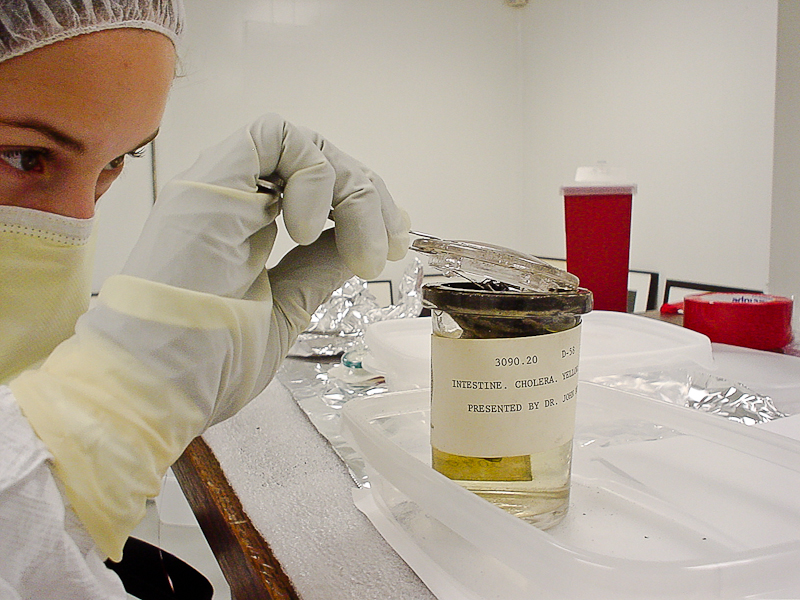Recent research at McMaster University’s Ancient DNA Centre has confirmed that the cholera outbreak in the 19th century was caused by the bacterium, Vibrio cholarae, Alison Devault, a PhD candidate and member of the research team, said.
Intestinal remains were acquired from the Mütter Museum in Philadelphia of a man who had perished in 1849 as a result of the cholera outbreak.
“We have learned that the 1849 genome is missing three regions of the genome, has 203 mutations, and likely has a different arrangement of the genome region coding for cholera toxin,” Devault said via email.
According to Devault, this alternate arrangement of the coding region for the cholera toxin is known as CTX, a “primary virulence factor,” which may have produced infectious CTX phage particles, which could then be absorbed by bacteria within the environment.
She said the actual effects of this cannot be directly determined, but they speculate that this could have stimulated the overall infectious properties of the historic cholera.
Devault said the cholera DNA from this study could have acquired the three missing genome regions from alternate sources or species by means of horizontal gene transfer, which is the same mechanism responsible for antibiotic resistance.
The result of a gain or loss of these genome regions regarding the effects on either the historical or classical strain are still unclear, but Devault said she is still confident in the implications of their research.
Devault said any knowledge they can gain about cholera historically will help to better understand how it evolved.
“One direction we are pursuing is investigating any presence or role of co-infections (infection with different pathogens at once) that may have significantly altered the severity of disease experiences in the past,” she said.
Devault said this is the first ancient DNA project regarding cholera.
“Not because it is not a critical historic and modern disease, but because DNA from the bacteria is not present in typical archaeological remains,” she said.
She said the specimen used for this cholera research project is rare because evidence of the cholera virus is found in organs and are not recoverable from bones or teeth, and so she is hopeful that their recent discovery will show the importance in DNA research of these preserved samples.
“We hope that work such as ours shows the potential for such research, and gives curators more evidence with which to make the tough decisions about whether to give researchers access to samples,” Devault said.






